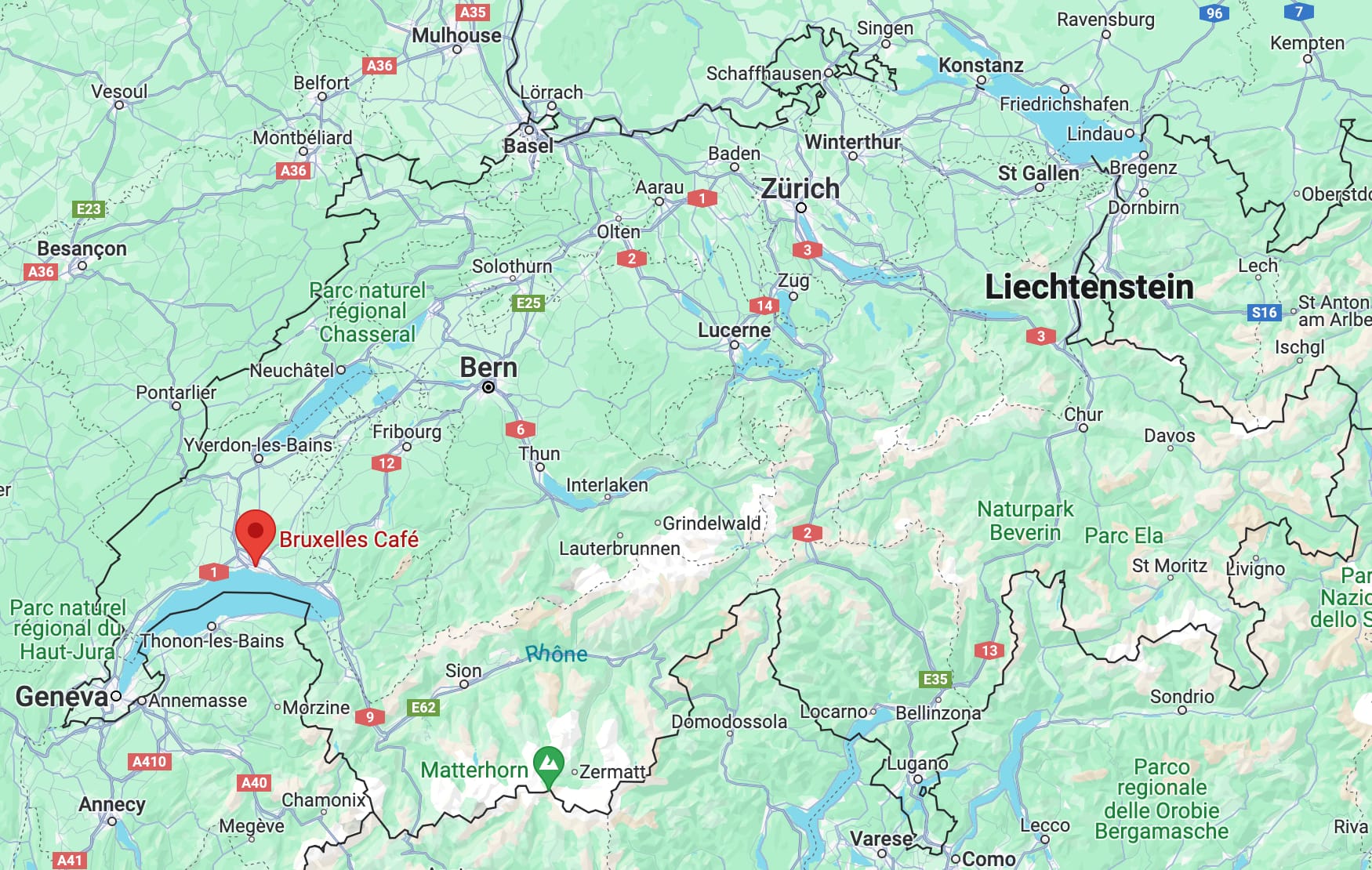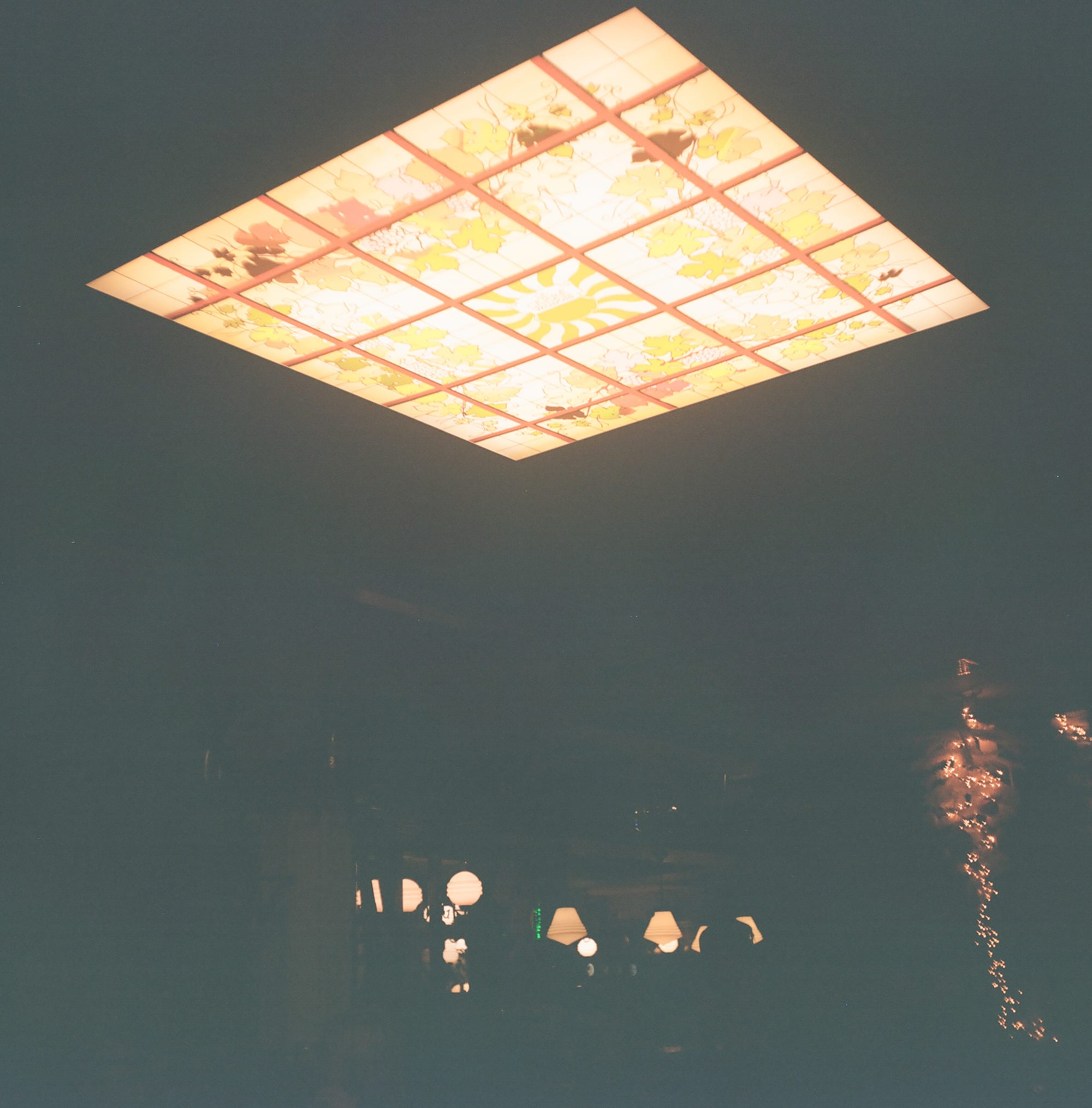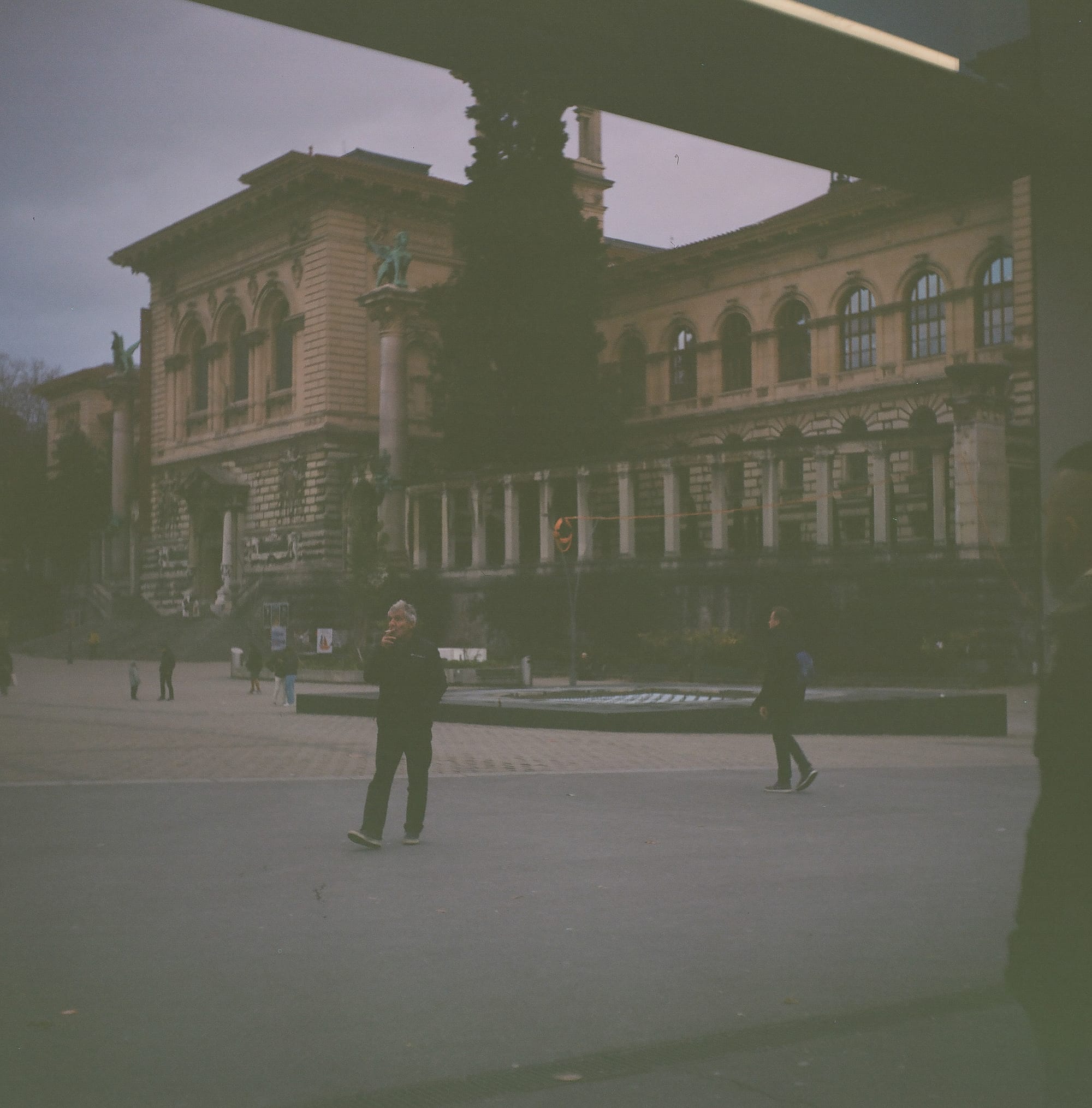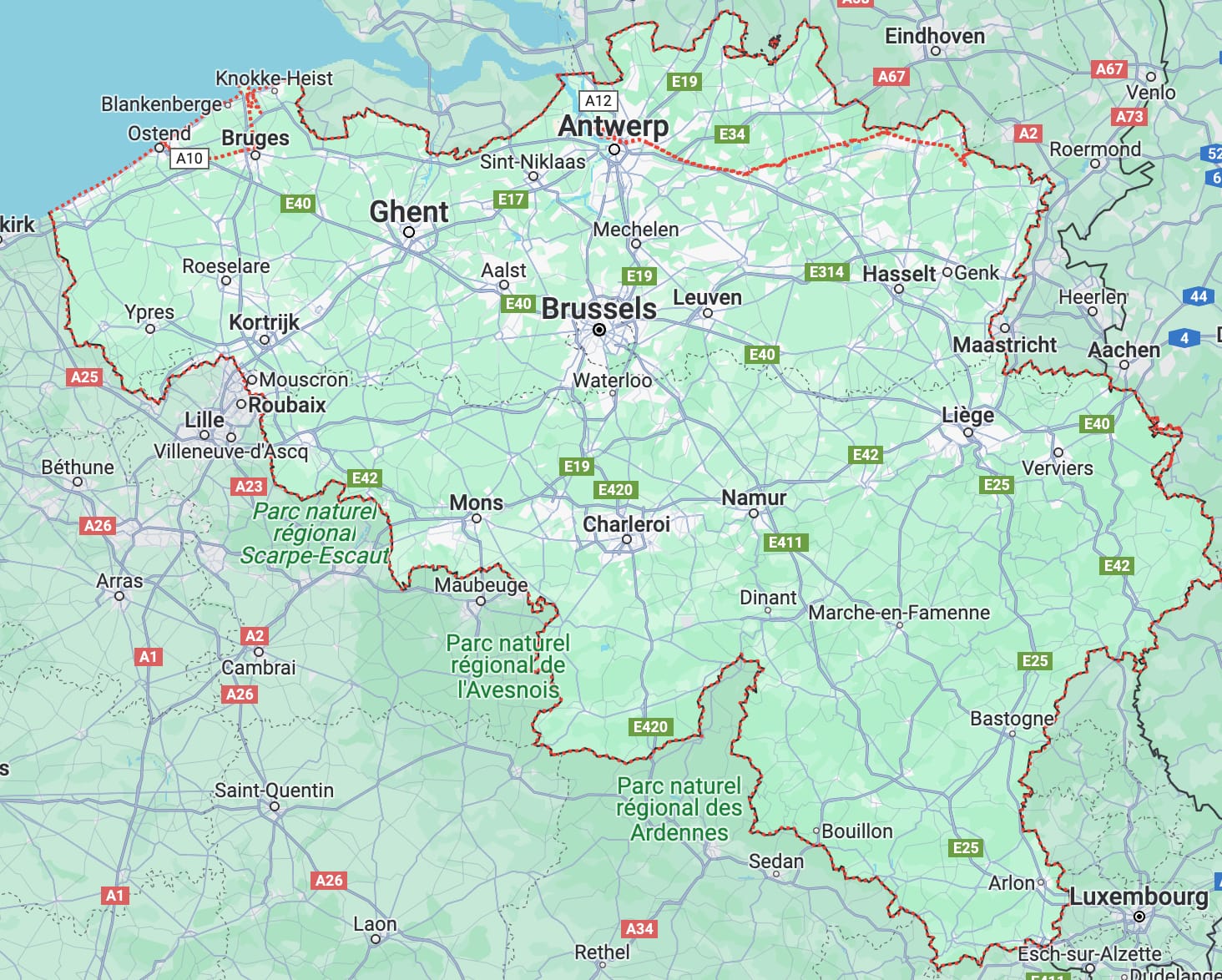Where to eat BELGIUM 🇧🇪 Lausanne: Bruxelles Café
Located across from the Palais de Rumine, where the Treaty of Lausanne was signed which sealed the fate of the Ottoman Empire, it is a most exquisitely located spot to play host to an authentic Belgian bar... unpretentious and very reasonable for the portion size and food quality.

Bruxelles Café
Place de la Riponne 1, Lausanne

Published January 9, 2024 · by Amanda Rivkin
What we ordered: For two persons, moules marinière and a mitraillette charlois (a baguette sandwich with salad, candied tomato, caramelized onions, chicken, bacon, cheese and French fries topped with Bruxelles sauce) and to drink, two small (25 cl) Triple Karmeliet beers, one large (50 cl) and one small Blue Moon, an American-produced Belgian-style white beer.
Cost: 80 CHF / €83 / $91

Bruxelles Café is a sturdy establishment built from the foundations of an old Swiss pub and adorned with Belgian beer-world regalia. Some of the old touches, like a stained-glass lighting fixture, square and colorful on the ceiling, attest to the other, earlier incarnation. It is also located one metro stop up the cliff inland on the line 2 from the main station, a fun excursion in its own right as the platforms and trains are slanted like a funicular to absorb the altitude climb.
Located across from the Palais de Rumine, where the Treaty of Lausanne was signed which sealed the fate of the Ottoman Empire, it is a most exquisitely located spot to play host to an authentic Belgian bar. Those who have been to Brussels around the Eurocratic districts of the Belgian capital know the familiar juxtaposition between a postwar Europe, with its faded imperial glory, that must also reckon with the colonial past.

The fare at the Bruxelles Café is standard Belgian bar fare, unpretentious and very reasonable for the portion size and food quality. The beer list of course is extensively Belgian or Belgian-style, as was the case with the Blue Moon my partner ordered. The offerings on tap cover the greatest hits of Belgian beer, with everything else you could want in a Belgian bar available by the bottle.
We went classic, moules frites and a mitraillette, literally a “machine gun” sandwich. The moules were fresh and the fries crispy. The variation I ordered, marinière, included a broth flavored with white wine, onions, garlic, parsley, a bay leaf, lemon, carrots and celery. It is the most classic and a bit hearty of the stylings of traditional Belgian moules. The fries were crispy.
As for the mitraillette, it came so loaded, my partner ate it with a fork as if a bread bowl before beginning to tackle the sauce-smothered baguette it came wrapped in. Asked to describe it mid-way through, he replied, “surprising.”
Both were completely delicious, utterly filling and totally satisfactory. The bonus end of empire vibes from the location were an extra chef’s kiss. Given the utterly reasonable price point, we can heartily recommend Café Bruxelles if you find yourself in Lausanne or otherwise on the trail of post-imperial Europe.

How to get to Belgium from Switzerland:
By car, it is a six-to-seven-hour journey through eastern France and Luxembourg before you reach the Belgian border.
By rail, albeit with several connections, the trip can be under seven hours through France.
Swiss Air and Brussels Airlines offer nonstop flights multiple times a day between Zürich and Brussels and Geneva and Brussels. Flight times are under 90 minutes generally and prices affordable. It is the more economical, though not necessarily the greener option, than by rail.
How many Belgians are in Switzerland: More than 15,000
Distance between Bern and Brussels: 640 km
Distance from Bruxelles Café to the Brussels: 645 km
Learn how to make Belgium's national dish, moules, and about its origins.
Follow our social media pages @swissglobaldining on Instagram, TikTok and YouTube